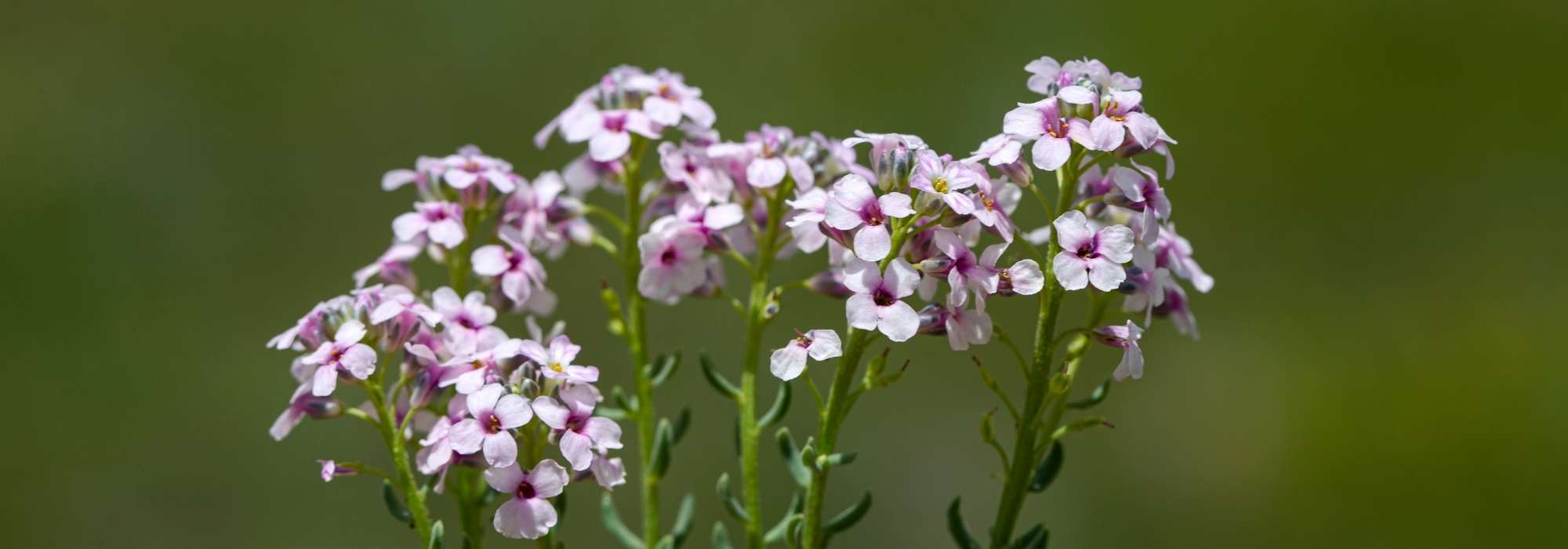
Aethionema: planting, growing
Contents
Aethionema in a nutshell
- It forms a flowering cushion in well-drained, sunny areas
- This small perennial shrub does not exceed 20 cm in height
- It is appreciated for its soft and bright flowering, in pink tones at the end of spring and in summer
- Hardy, it loves full sun and dry or alpine gardens
- It is a boon for flowering dry rockeries, alpine pots, or low walls!
A word from our expert
Aethionema is a small perennial plant or undershrub that flowers abundantly in late spring and summer. It forms a lovely cushion of often evergreen, blue-green leaves, covered with a profusion of pink pompom-like flowers, similar to Aethionema armenum ‘Warley Rose’.
Robust and hardy, this small plant native to arid mountains thrives in sunny locations and well-drained, even calcareous, soils. Reaching no more than 20 cm in height, Aethionema is perfect for flowering rockeries, scree, dry banks, paving, low walls, and alpine containers, forming small, low-maintenance clumps.
Discover this excellent plant for dry gardens without irrigation!
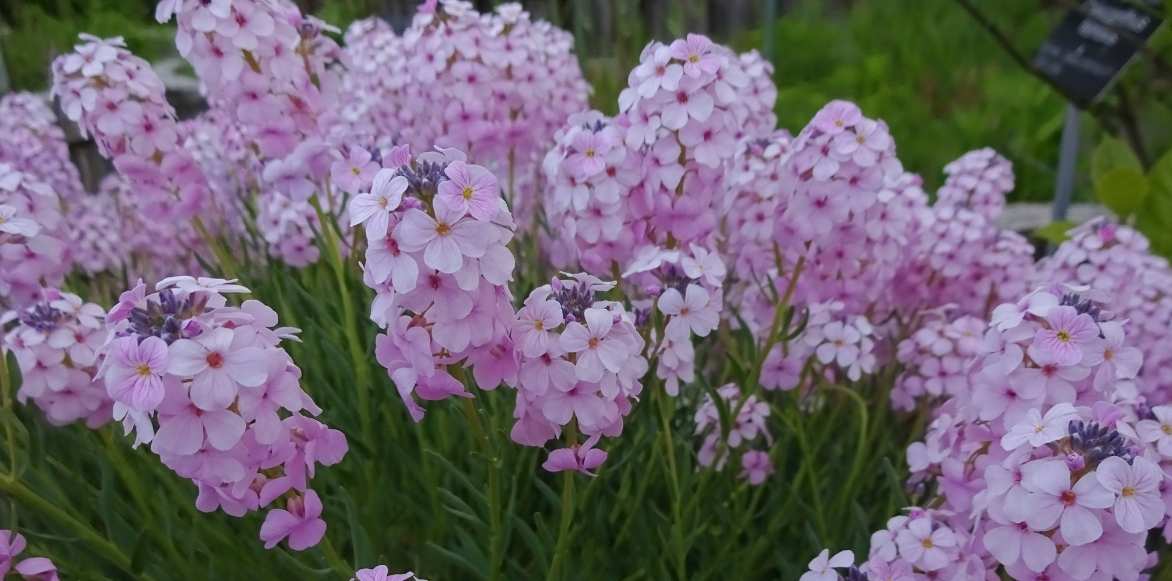
Aethionema grandiflorum
Description and botany
Botanical data
- Latin name Aethionema
- Family Brassicaceae, Cruciferae
- Common name Aethionema
- Flowering May to August
- Height 0.15 to 0.30 m
- Exposure Sun
- Soil type Stony (poor and draining), dry
- Hardiness -15 °C
Aethionema is an evergreen undershrub perennial from the Brassicaceae or crucifer family, just like cabbages, alyssums, and aubrietas. It grows spontaneously in sunny, calcareous montane areas of the Mediterranean basin, the Caucasus, and Turkey.
While the genus comprises around fifty species of undershrubs, perennials, and annuals, Aethionema armenum, or Armenian aethionema, and its varieties are the most well-known among gardeners. Aethionema grandiflorum is a large-flowered version.
Aethionema forms a lovely tuft with a compact, cushion-like, bushy habit, measuring 15 to 30 cm in all directions. The erect stems bear persistent to semi-persistent foliage during the colder season, depending on the climate. The leaves are small, measuring 0.5 to 1.5 cm in length, short, linear, and oblong, displaying a bluish-green colour.
This short-lived perennial compensates for its brief lifespan with a generous flowering period lasting nearly four months.
On this dense vegetation, the lovely pompom-like flowers appear from May until August. Small cruciform flowers are gathered in more or less loose terminal clusters at the tips of the stems. Each flower measures 3 cm in diameter and opens into four petals arranged in a cross, a characteristic arrangement of plants in this family. They feature six stamens. Their colour is pale pink in the type, a deeper pink in ‘Warley Ruber‘, the most famous cultivar, or a bright pink in ‘Warley Rose’.
Once pollinated by insects, the flowers give way to elongated dry fruits in siliqua containing the seeds. When these capsules split open, the seeds fall to the ground and will easily germinate at the edges of paths, between paving stones, on dry slopes, and in the crevices of dry stone walls…
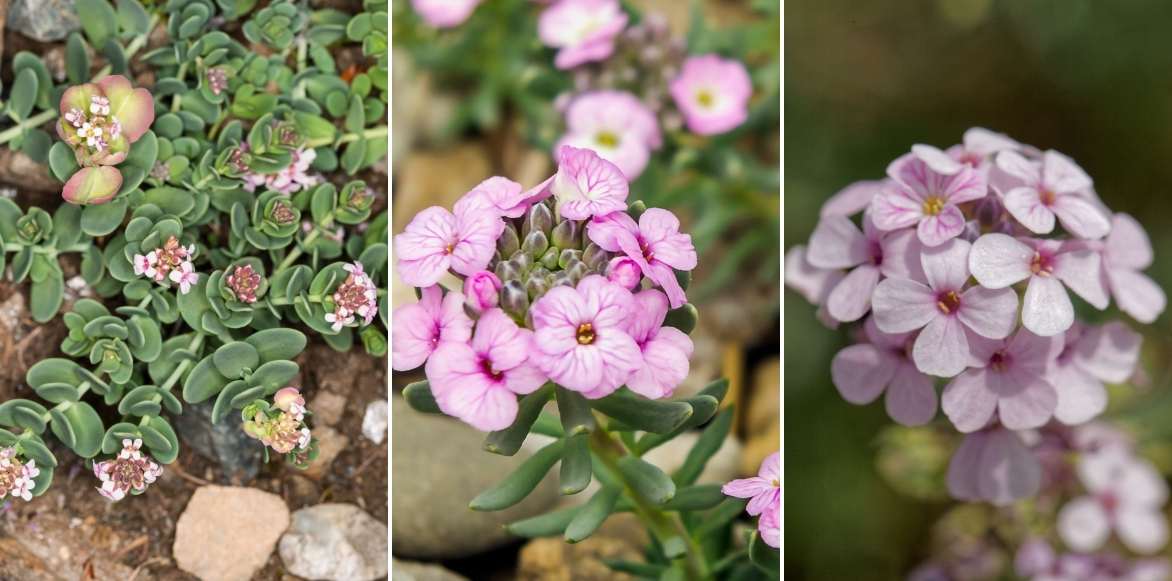
Aethionema tomasianum, Aethionema schistosum, and Aethionema grandiflorum
Read also
5 perennials for dry groundMain species and varieties
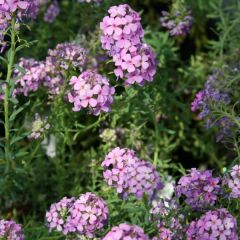
Aethionema armenum Warley Rose
- Flowering time June to September
- Height at maturity 20 cm
Discover other Aethionema
View all →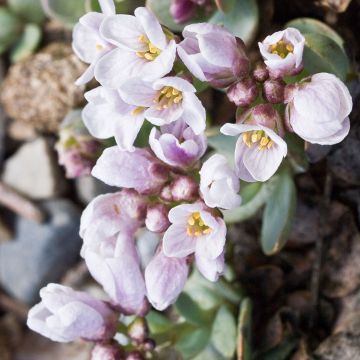
Available in 1 sizes
Available in 1 sizes
Planting Aethionema
Where to plant it?
Hardy down to -15°C in sufficiently draining soil, easy to cultivate, Aethionema is a montane plant that loves the sun, is water-efficient, and thrives in calcareous and stony soils. Naturally growing in the crevices between rocks and scree, it does not tolerate any stagnant moisture at its base. A relative dryness in summer is always preferable to overly wet soils. In insufficiently dry soil during winter, its hardiness could also be compromised.
A sun-loving perennial, preferring somewhat arid locations, this groundcover shrub requires light, neutral or calcareous, stony well-drained soil. Plant it at the edge of a path, in rockeries, in paving, above or along a low wall, or in alpine pots on sunny balconies and terraces.
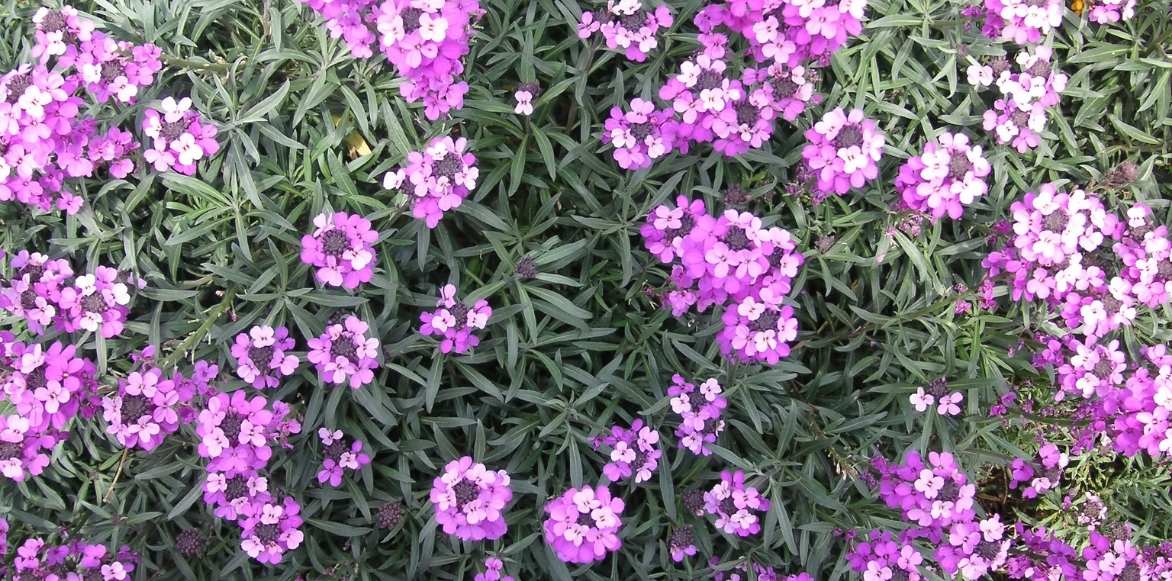
Aethionema ‘Warley Rose’
When to plant it?
Planting Aethionema is best done in spring from March to May in colder regions or in September-October in warmer areas.
How to plant it?
In open ground
To create a beautiful, dense, and flowering groundcover, plan for about 10 plants per square metre, spacing them 30 cm apart.
- Hydrate the root ball before planting
- Loosen the soil well with a fork
- If necessary, create a gravel bed to improve drainage
- Dig a hole twice the volume of the root ball
- If your soil is a bit heavy, lighten it with coarse sand
- Position the plant and fill the hole without burying the collar
- Firm the soil without damaging the plant
- Water
- Spread a mineral mulch (gravel, pebbles, slate…) to reduce watering in summer
In pots
- Spread a good drainage layer (gravel, pumice, or clay balls) at the bottom of the container
- Plant the root ball in a mixture of potting soil and sand
- Water regularly
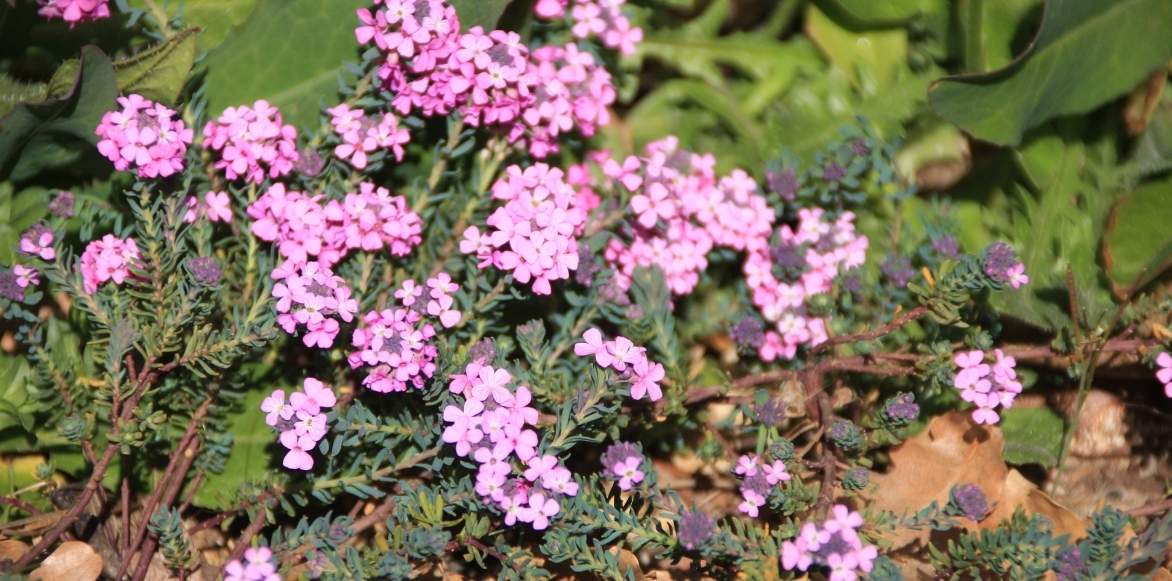
Aethionema armenum
Cultivation and care
Aethionema requires no special care. It is truly an easy-to-maintain plant, ideal for dry gardens. In open ground, water regularly during the first summer, especially in case of drought. Afterwards, the plant will rely on rainwater. A mineral mulch to keep the soil cool and a few light waterings will be necessary during prolonged heat.
In pots, water more regularly before the substrate dries out too much. Allow the compost to dry on the surface between waterings. You can fertilise at the beginning and end of summer with a flowering plant fertiliser to support the flowering. Repot every 2-3 years and top-dress each spring in the meantime.
Remove faded flowers as they appear to prolong flowering as much as possible. After flowering, use pruning shears to cut back the spent flower stems to limit seed spread and prevent invasive sowing.
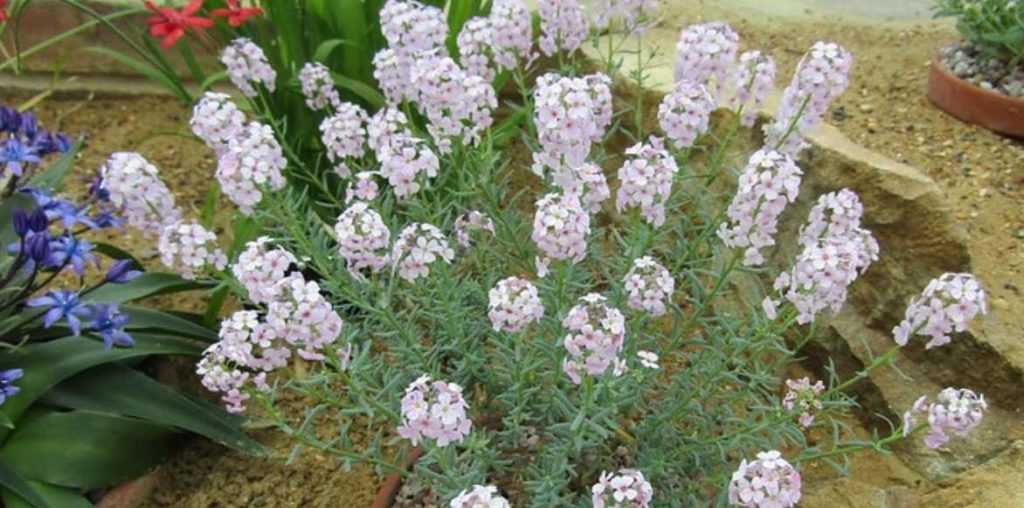
Aethionema cordifolium in a dry garden (© Leonora Enking)
Multiplication
You can sow to multiply Aethionema, knowing that it generally self-seeds. Sow under a cold frame in autumn or very early spring for planting in the garden a year later. However, we recommend propagation by cuttings, which remains the simplest method to multiply this undershrub.
Propagation by cuttings
- Take a non-flowering shoot during summer
- Remove the lower leaves
- Insert the lower part into a mixture of potting soil and sand
- Keep in partial shade and maintain the substrate moist
- Pot on two months later, then transplant in the following spring
Associating
With excellent drought resistance and tolerance to very sunny exposures, Aethionema are perfect for dry gardens, low-maintenance gardens, holiday gardens, alpine or Mediterranean settings. From spring to summer, they can easily bloom surrounded by other small sun-loving perennials that flower in similar tones, such as Sea Thrift, Caucasian Arabis, Phlox subulata, Erigeron or Fleabane, Geranium sanguineum, Nepeta racemosa, or a Dianthus gratianopolitanus ‘Badenia’, with which they will quickly create charming and floriferous scenes.
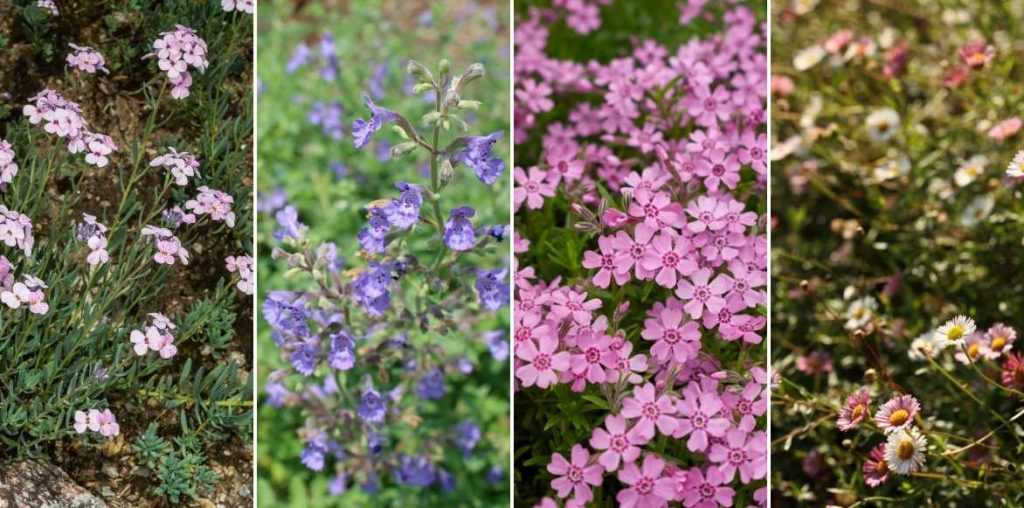
In a wild rockery, Aethionema grandiflora alongside Nepeta racemosa, Phlox subulata, and Erigerons
In a stone trough or pot, their companions can also include alpine and montane plants such as Alyssum and Aubrieta.
They enhance a pink/purple inspiration theme surrounded by lavenders, asters, and pinks. With their pink flowers, they will also form complementary pink/green-yellow associations alongside Allium moly and yarrow.
At the edge of a mineral bed, they will pair well with sedums and other low-growing plants that tolerate summer drought, such as Deltoid Pink or the Landes Pink, and Thymus capitatus. They will add a subtle pastel touch, scattered among grasses like Stipa pennata.
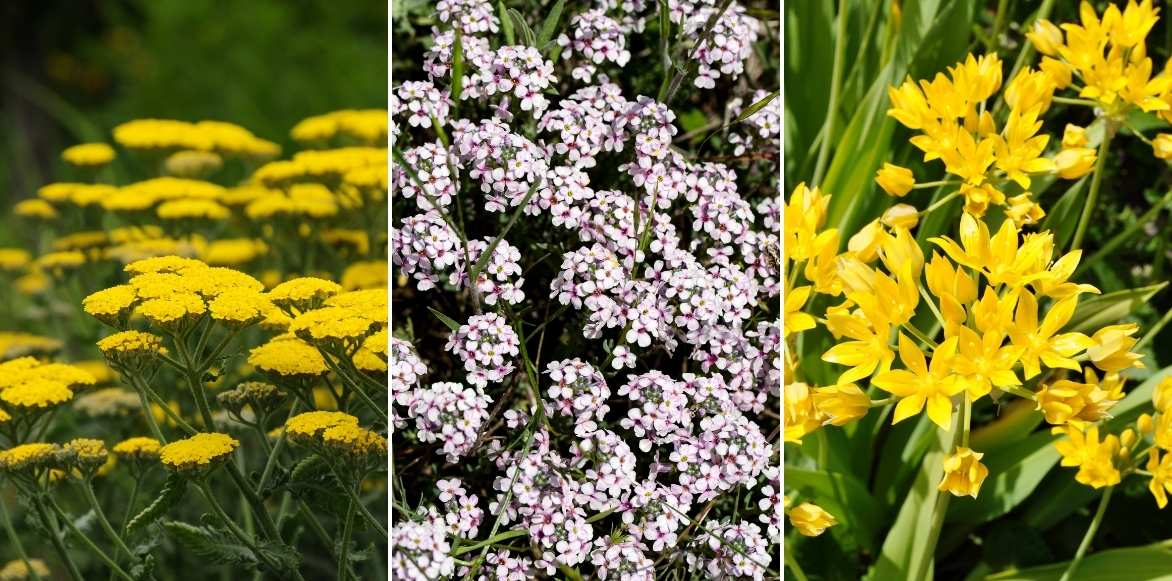
In the company of yellow blooms, here Achillea ‘Moonshine’ on the left and Allium moly on the right
Useful resources
- Discover our perennials for rockeries!
- What to plant in a dry garden?
- Find THE groundcover perennial that flowers all summer long!
- Long live pink gardens!
- Subscribe!
- Contents
































Comments